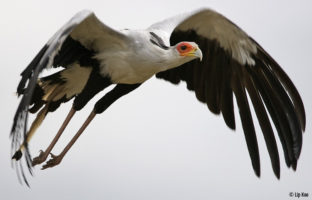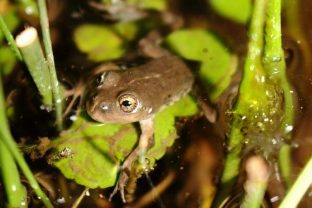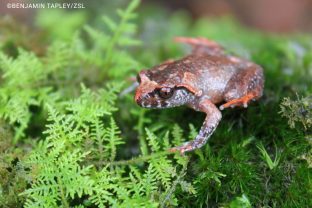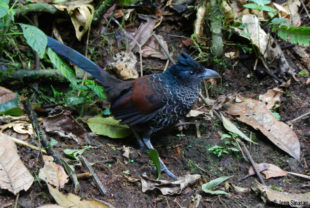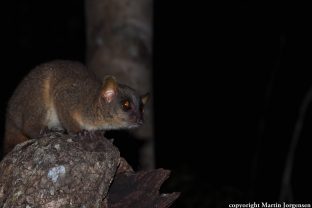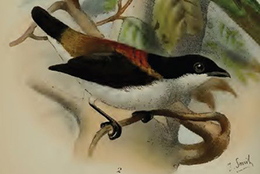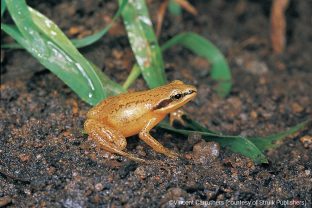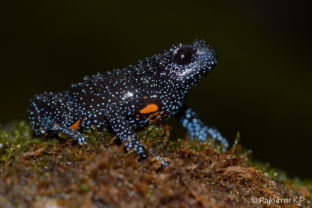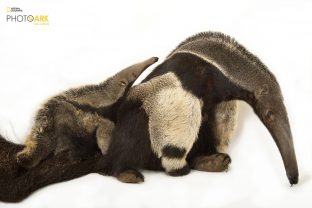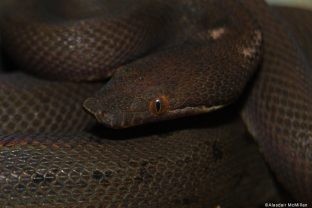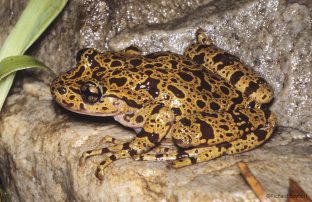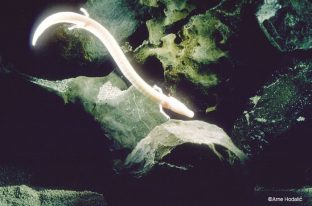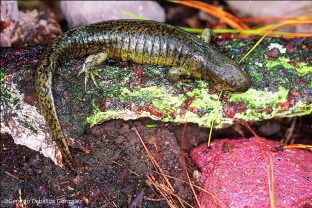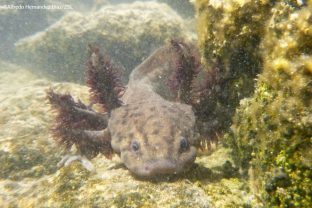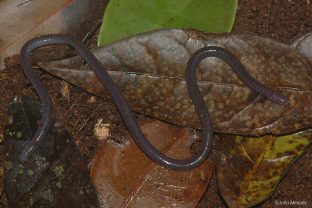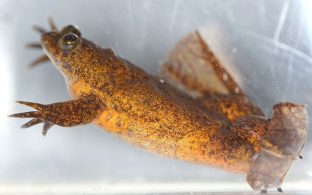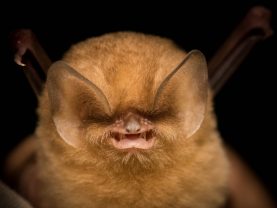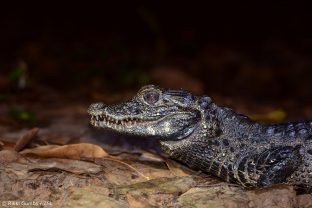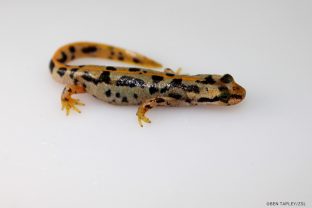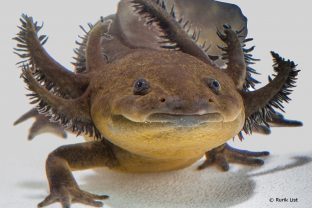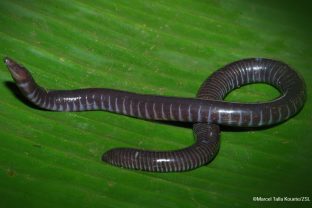FOCAL EDGE SPECIES
Secretarybird
Sagittarius serpentarius
This elegant, long-legged bird kills its prey by repeatedly stamping on it.
Conservation Attention
Low
El Rincon Stream Frog
Pleurodema somuncurense
The Critically Endangered El Rincon stream frog exists on a single plateau in Argentinian Patagonia. Though temperatures in the region often plummet below freezing, the frog avoids the cold by spending its life in streams whose waters are heated by permanent thermal springs.
Conservation Attention
Low
Botsford’s Leaf-litter Frog
Leptobrachella botsfordi
Botsford’s leaf-litter frog was only described by science in 2013.
Conservation Attention
Medium
Banded Ground-cuckoo
Neomorphus radiolosus
Despite the large size of the Banded Ground-cuckoo, this species is inconspicuous and not easy to observe.
Conservation Attention
Low
Northern Giant Mouse Lemur
Mirza zaza
This unassuming nocturnal lemur has the largest testes to body ratio of all mammals.
Conservation Attention
Medium
Cebu Flowerpecker
Dicaeum quadricolor
In the late 1800s, this species was known from only two localities in Cebu, where it was incredibly rare.
Conservation Attention
Very Low
Mistbelt Moss Frog
Anhydrophryne ngongoniensis
The mistbelt moss frog, also known as the mistbelt chirping frog, reaches lengths of just 2 cm. This may be the reason why this species was only discovered in 1993, alongside its faint call, making it difficult to detect.
Conservation Attention
Low
Galaxy Frog
Melanobatrachus indicus
This is an extremely rare species, the population is fragmented with a total size of less than 5,000 km².
Conservation Attention
Low
Giant Anteater
Myrmecophaga tridactyla
The giant anteater is the largest of the living anteater species and can eat up to 30,000 ants a day!
Conservation Attention
Medium
Round Island Keel-scaled Boa
Casarea dussumieri
The Round Island keel-scaled boa is unique amongst all terrestrial vertebrates on Earth, being the only species to have an intramaxilliary joint that can separate and split the anterior and posterior bones of the upper jaw.
Conservation Attention
Good
Hewitt’s Ghost Frog
Heleophryne hewitti
Hewitt’s ghost frog is an attractively patterned frog that lives in fast flowing mountain streams and rivers. The tadpoles of this species develop very slowly, taking up to two years to complete their metamorphosis into the adult form.
Conservation Attention
Low
Olm
Proteus anguinus
The olm is Europe’s only cave-dwelling vertebrate, and has numerous unique adaptations for an underground life. Incredibly, the olm can survive without food for up to a decade!
Conservation Attention
Low
Granular Salamander
Ambystoma granulosum
The granular salamander, unlike many of its close relatives, is a fully metamorphosing species of mole salamander. It therefore develops into an adult form, losing its larval characteristics such as gills and fins, and developing adult traits such as eyelids and functioning lungs.
Conservation Attention
Low
Taylor’s Salamander
Ambystoma taylori
Taylor’s salamander exhibits some incredible features, such as being able to live in salt waters with such high salinity that it would kill most other amphibian species!
Conservation Attention
Low
Lappet-Faced Vulture
Torgos tracheliotos
The Lappet-faced vulture has the largest wingspan of any vulture in Africa!
Conservation Attention
Good
Sagalla Caecilian
Boulengerula niedeni
The Endangered Sagalla caecilian is found on Sagalla Hill, Kenya, with a total range which is equivalent to the area half the size of Manhattan Island.
Conservation Attention
Medium
Lake Oku clawed frog
Xenopus longipes
The Lake Oku clawed frog is a small amphibian reaching just 36mm in length. This diminutive species is one of only two frogs known to be ‘dodecaploid’, meaning they have a staggering 12 sets of chromosomes – humans have just two!
Conservation Attention
Good
Cuban Greater Funnel-eared Bat
Natalus primus
The Cuban greater funnel-eared bat is the largest Caribbean representative of a small, ancient family of cave-dwelling bats that evolved in the West Indies.
Conservation Attention
Very Low
Dwarf Crocodile
Osteolaemus tetraspis
The dwarf crocodile is one of the world’s smallest crocodilians, rarely exceeding 2 metres in length. The taxonomy, distribution, population size and conservation status of dwarf crocodiles remains unclear.
Conservation Attention
Very Low
Sardinian Brook Salamander
Euproctus platycephalus
The Sardinian brook salamander is endemic to Sardinia, Italy, and is often found living in cave systems.
Conservation Attention
Low
Lake Lerma Salamander
Ambystoma lermaense
The Lake Lerma salamander is a large species of lungless salamander, reaching almost a quarter of a metre long!
Conservation Attention
Low
Victoria caecilian
Herpele multiplicata
The Victoria caecilian is only known from one individual, collected in 1912, and it has not been seen since! This has led to fears that this species may have become extinct, and its taxonomic validity has also been put into question.
Conservation Attention
Very Low
